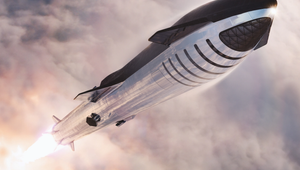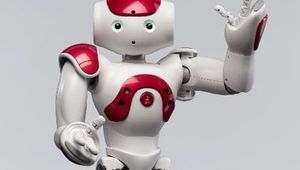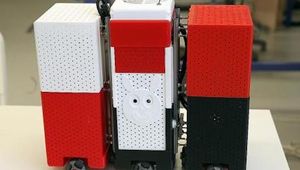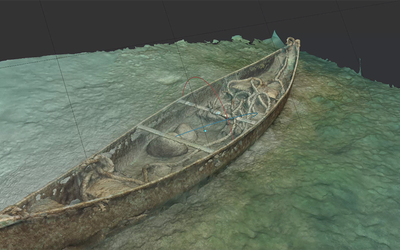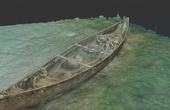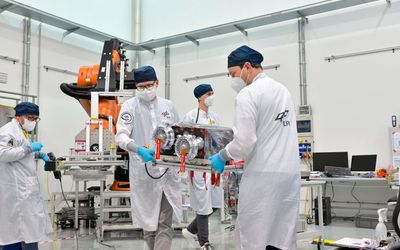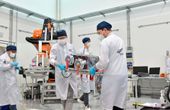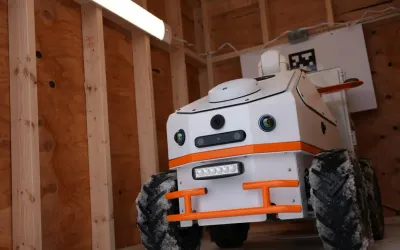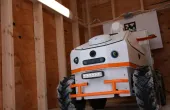BionicWheelBot
The robot is based on the Moroccan flic-flac spider, which can walk like other spiders. It can also propel itself into the air, with a combined sequence of somersaulting and rolling on the ground. It is twice as fast in so-called rolling mode than when walking. The BionicWheelBot has eight legs, enabling it to both walk and roll. They are controlled by a total of 15 small motors, which fit in the knee joints and body.
Technical Specifications
| Body length | 570 |
| Body height | 238 |
| Body width | 796 |
| Leg length | 344 |
| Gauge | 164 |
| Wheel diameter | 267 |
| Degrees of freedom | 15 |
| Material, body and legs | |
| Battery | 7.4 |
| Radio module | 866 |
| Radio remote control | |
| Processor | |
| Actuator technology | 14 |
| 1 | |
| Sensor technology | 1 |
Overview
The BionicWheelBot has eight legs, enabling it to both walk and roll. They are controlled by a total of 15 small motors, which fit in the knee joints and body. There are also 14 automatic-locking worm gear units that ensure that the spider only has to use energy when moving its legs – not, however, to keep its body upright when standing still.
In rolling mode, the BionicWheelBot does a somersault with its whole body, just like the real flic-flac spider. The robot has an inertial sensor, therefor it always knows what position it is in and when it has to push off again. It is therefore much faster when rolling than walking and can even overcome inclines of up to five per cent uphill.
The BionicWheelBot propels itself with a tripod gait; the artificial spider uses six of its eight legs to walk, leaving the two so-called push-off legs folded up. For every step, three legs remain on the ground, whilst the other three are lifted, moved forward and then put back down on the ground.
With the same sequence, the BionicWheelBot then moves the other three legs forward that were just on the ground.
In order for the artificial spider to move its long legs quickly and efficiently, the drives must apply comparatively high forces. They are supported by a spring mechanism for this.
A spring is fitted in every knee and shoulder joint, which is preloaded when the relevant leg is lifted. The force temporarily stored at this time then supports the corresponding motor in the countermovement when lifting the body.
The BionicWheelBot has a secure footing even when walking, regardless of the condition of the ground. The bionic spider can also turn on the spot. It stands on its two longest legs, pushes its body upwards, and then turns in the required direction before continuing to walk as normal.
In order to start rolling, the BionicWheelBot bends three legs each on the left and right of its body to make a wheel. To do so, it firstly brings the rear legs in parallel into position, and then pulls the
others up after them. The two legs folded up whilst walking then extend, push the rolled-up spider off the ground, and continuously push it forward whilst rolling.
This prevents the BionicWheelBot from grinding to a halt in the sand and ensures that it can move
itself forward even on rough terrain like its natural role model in the desert.
References
Describes the technology, its background, and specifications. Also introduces the team that developed the technology.
